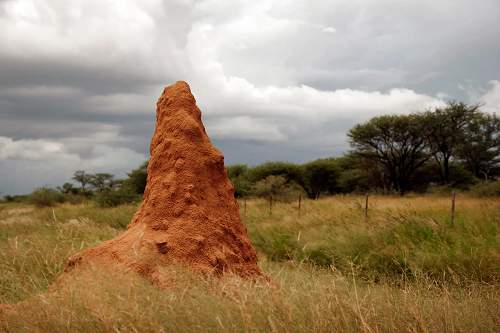 Sunday, May 19, 2024
Sunday, May 19, 2024  Sunday, May 19, 2024
Sunday, May 19, 2024 
Looking to nature can often provide inspiration, especially in construction. Researchers have studied how wind travels through the complex internal structure of a termite mound in hopes that it will one day inform the construction of a building that can semi-passively regulate its own climate.
Species of mound-building termites are found in Africa, Australia, and South America. Some mounds are astounding examples of intricate architecture, reaching 26 ft (8 m) high and having 98 ft (30 m) diameters. Their hardy construction means they often outlive the termite colonies that inhabit them.
Now, researchers have taken a closer look inside mounds built by Namibian Macrotermes michaelseni termites, which house more than a million individual termites. They were particularly interested in the ‘egress complex’, the dense, lattice-like network of tunnels that captures wind around the mound to create turbulence inside that controls the interior climate.
When building their mounds, M. michaelseni must consider internal and external factors that allow energy, matter and information to flow in both directions. The egress complex on the north-facing aspect of the mound appears predominantly during the rainy season when the mound is growing. At that time, it’s the only opening between the mound and the external environment. It’s thought that the complex facilitates the evaporation of excess moisture while maintaining adequate ventilation. But the researchers wanted a better understanding of how it worked.
They experimented using a 3D-printed model fragment of an egress complex and drove an oscillating mixture of carbon dioxide and air through it. Using sensors to track the air the researchers found that the egress tunnels interacted with wind blowing on the mound in ways that enhanced ventilation.